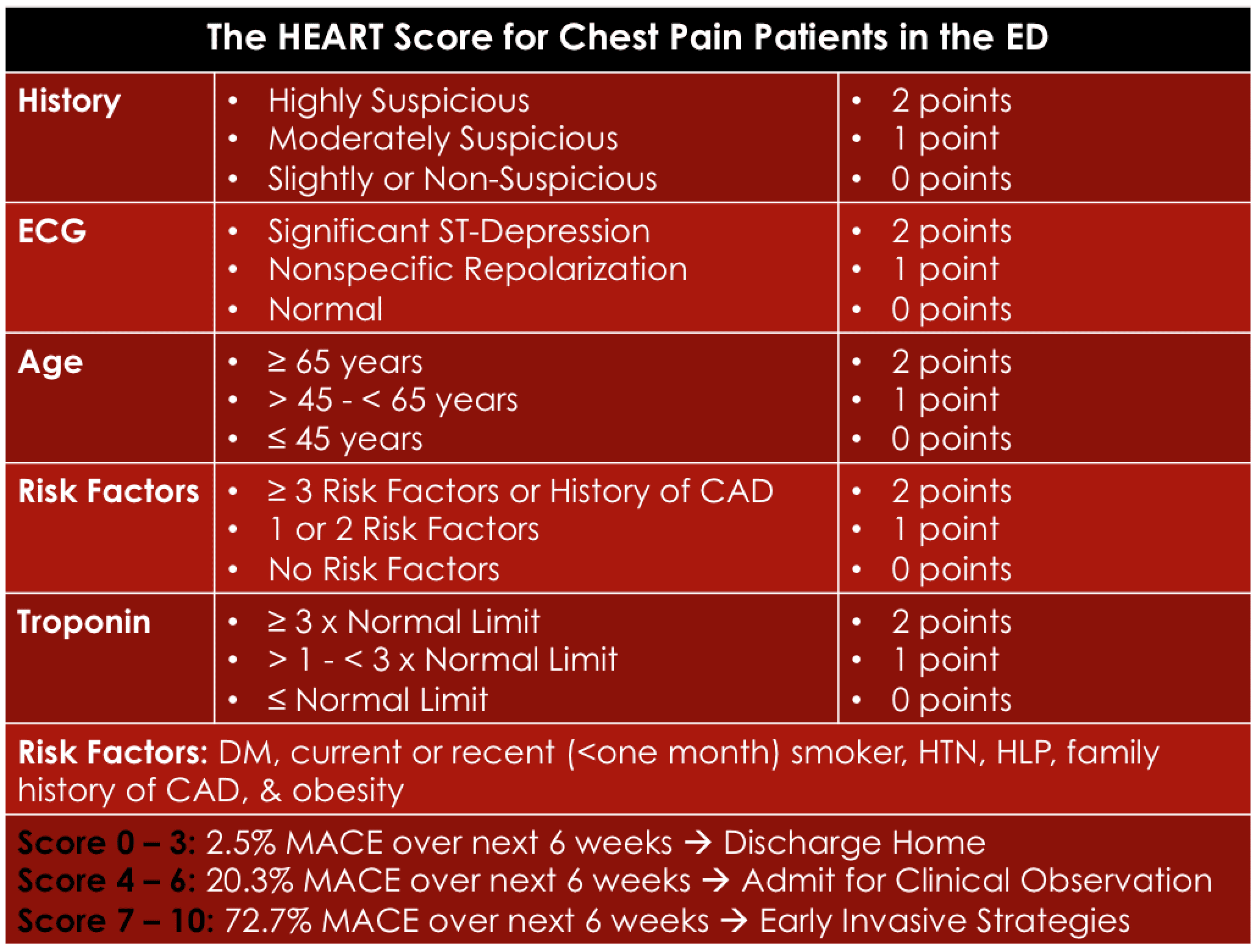

2– 6 The second level of assessment involves the identification of long‐term risk based on the development of postevent complications. At hospital admission, patients can be stratified by demographics, physical examination, and presenting signs, as well as initial laboratory and angiographic data. 1 The process of estimating the long‐term risk of morbidity and mortality after STEMI is based on 2 levels of assessment. This unique milieu produces post‐STEMI complications at a variable yet quantifiable rate. Patients suffering from ST‐elevation myocardial infarction (STEMI) have preexisting characteristics that vary across a range of severity. In the validation database, the C‐statistic was 0.81, with a NRI of 0.35 ( P=0.01). The C‐statistic produced by the dynamic score in the derivation database was 0.76, with a net reclassification improvement (NRI) of 0.33 ( P<0.0001) from the inclusion of dynamic events to the original TIMI risk score. The dynamic score included the development of in‐hospital MI, arrhythmia, major bleed, stroke, congestive heart failure, recurrent ischemia, and renal failure. Each variable was assigned an integer value based on the odds ratio, and the final score was the sum of these values.
Timi risk score for stemi full#
Variables with P<0.05 were incorporated into a full multivariable Cox model to assess the risk of death at 1 year. Each variable was tested individually in a univariate Cox proportional hazards regression. New variables were major clinical events occurring during the index hospitalization. Baseline variables were from the original TIMI risk score for STEMI. The dynamic TIMI risk score for STEMI was derived in ExTRACT‐TIMI 25 and validated in TRITON‐TIMI 38.


 0 kommentar(er)
0 kommentar(er)
